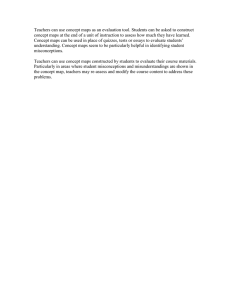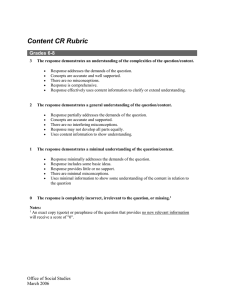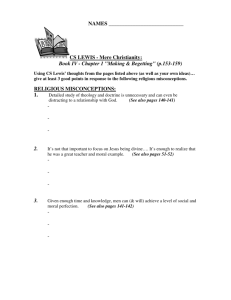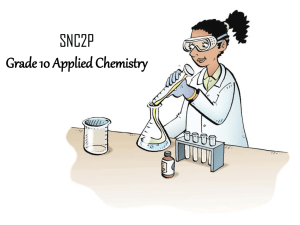Algebra: Some Common Misconceptions
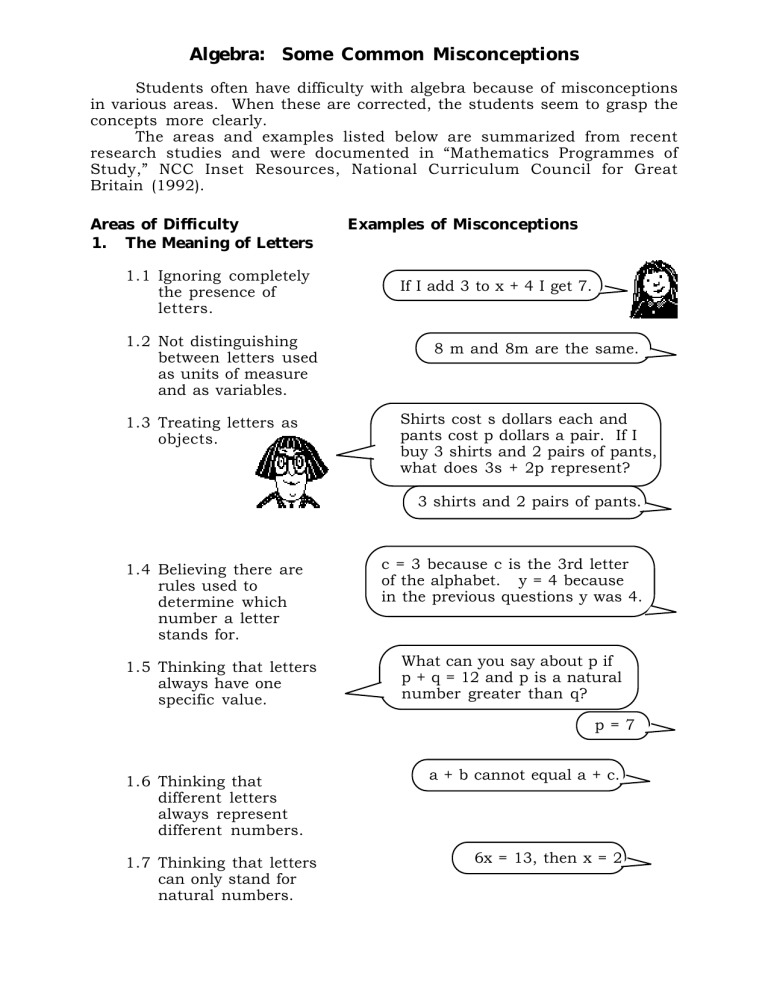
Algebra: Some Common Misconceptions
Students often have difficulty with algebra because of misconceptions in various areas. When these are corrected, the students seem to grasp the concepts more clearly.
The areas and examples listed below are summarized from recent research studies and were documented in “Mathematics Programmes of
Study,” NCC Inset Resources, National Curriculum Council for Great
Britain (1992).
Areas of Difficulty
1.
The Meaning of Letters
1.1 Ignoring completely the presence of letters.
1.2 Not distinguishing between letters used as units of measure and as variables.
1.3 Treating letters as objects.
Examples of Misconceptions
If I add 3 to x + 4 I get 7.
8 m and 8m are the same.
Shirts cost s dollars each and pants cost p dollars a pair. If I buy 3 shirts and 2 pairs of pants, what does 3s + 2p represent?
3 shirts and 2 pairs of pants.
c = 3 because c is the 3rd letter of the alphabet. y = 4 because in the previous questions y was 4.
1.4 Believing there are rules used to determine which number a letter stands for.
1.5 Thinking that letters always have one specific value.
What can you say about p if p + q = 12 and p is a natural number greater than q?
p = 7 a + b cannot equal a + c.
1.6 Thinking that different letters always represent different numbers.
1.7 Thinking that letters can only stand for natural numbers.
6x = 13, then x = 2
Areas of Difficulty
2.
Misconceptions about
Notation
2.1 Combining letters and numbers incorrectly because they think that operation symbols cannot be part of an answer.
2.2 Neglecting to use brackets when needed.
Examples of Misconceptions a + b = ab
2x + 3 = 5x
The area of this rectangle is
3
×
x + 4 or x + 4
×
3.
3 x + 4
3.
Misconceptions about
Generalizations
3.1 Not understanding that a generalization is essentially a statement of a method.
3.2 Inability to generalise because of a lack of understanding of arithmetic operations.
3.3 Inability to generalize because the student is unable to define the methods s/he has used.
4.
Misapplication of Rules
4.1 Disregarding signs when manipulating expressions.
“P = 2l + 2w” describes a method for finding the perimeter of a rectangle with length, l, and width, w.
2l + 2w can’t be an answer because there is still addition to do.
x
÷
y = y
÷
x (It doesn’t matter which way you write it because you always divide the larger number by the smaller number.)
15 – 3x = 6
3x = 6 + 15
3x = 21 x = 7
–6x = 12 x = 12
6 x = 2
